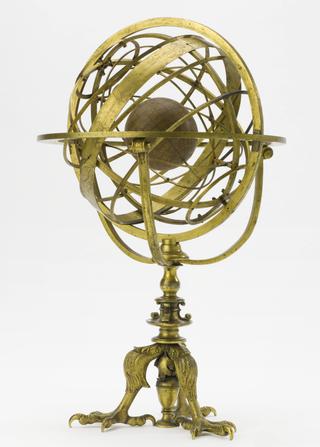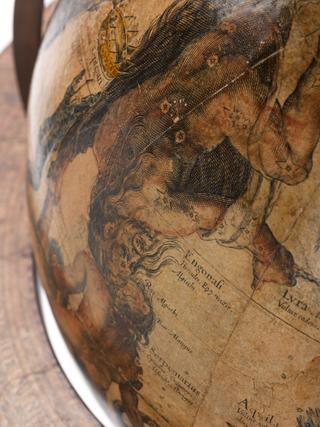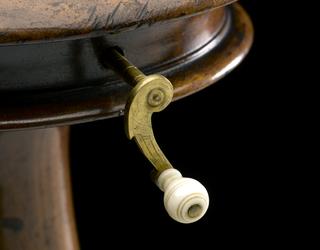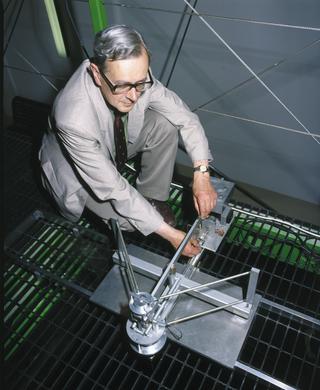
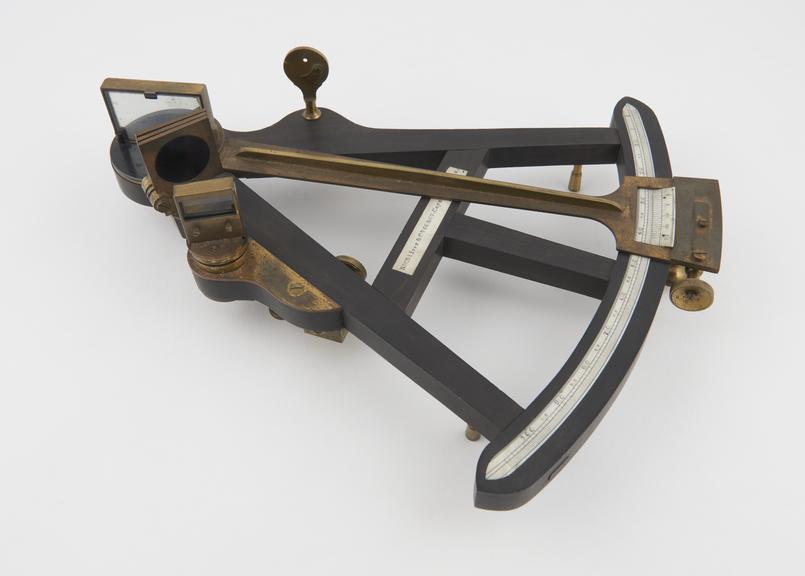
Octant with ebony frame and 9-inch radius limb with brass index arm and fittings and inlaid ivory plates on the crossbar and back; made by S.W. Silver and Co, 66 & 67 Cornhill. London, London, 1835-1845. Fitted with ivory vernier and scales measuring to 92°, with screw adjustment for the index-glass and similar for horizon glass with lever, worm gear, and milled clamping screw. The sight vane has two pinholes and a swivelling shutter. A pencil or screwdriver is missing from the crossbar, box not present
Dated to the mid nineteenth century this octant has a wooden frame inlaid with ivory scales and naked-eye sights. Made by S.W. Silver & Company, London this instrument would have been used for navigation on a ship. The octant could be used to find latitude by measuring the height of the midday Sun or a suitable star at night. Longitude could also be found from determining local noon from the maximum height of the Sun and comparing it with a chronometer set to a fixed meridian. The angle between the fixed stars and the Moon could also be measured to discover longitude using lengthy calculations and tables from the Nautical Almanac.
